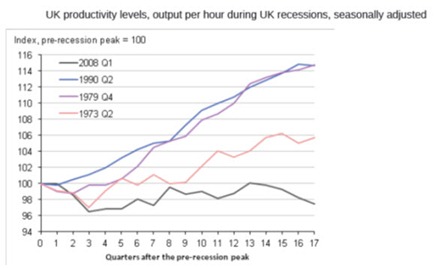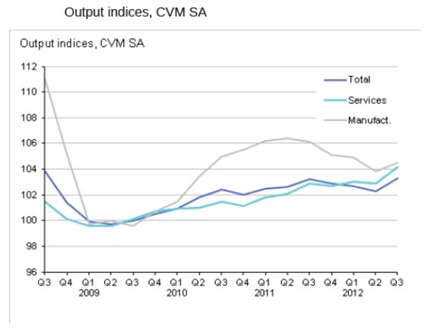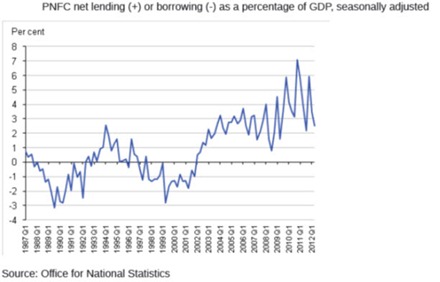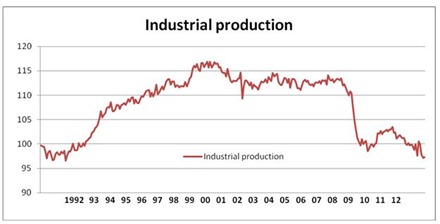.111ZChina’s economy speeds up
By John Ross
China’s economy in 2012 was "a tale of two halves": In the first six months slowdown, even a feeling of developing crisis; in the second half recovery and accelerating growth. The story therefore had a happy ending. But it is worth noting what went wrong in the first half, and how it was corrected in the second, as this contains lessons for the future.
The initial problem in early 2012 was simple. China’s economic policy makers underestimated the problems in the developed economies. China’s official prediction of 10 percent export increase in 2012 could not be achieved without significant growth in developed markets. This did not materialize – the US economy grew slowly while Japan and the EU’s fell into a new decline. Consequently, as is now officially stated, 2012’s export target will not be achieved.
This itself was not an extremely serious error. It is impossible in economics, due to the enormous number of variables involved, to make precisely accurate predictions, only orders of magnitude can be accurately predicted. The undershoot in export growth in 2012 will not be enormous. To compensate for international demand being weaker than predicted China required a domestic economic stimulus. It was here that a much more serious problem initially arose.
Early in 2012 the World Bank produced a report arguing that China’s state should "get out" of the economy – something clearly going against a new state stimulus program. Supporters of such neo-liberal policies in China, for example Lang Xianping, launched a campaign arguing that a stimulus program was futile and that China faced terrible economic depression. Western authors such as Nouriel Roubini advanced less extreme versions of the same analysis.
Such "the state must get out of the economy" neo-liberal policies have produced economic disaster where they have been pursued in countries as diverse as Europe, Latin America and Russia. I warned in this column in March that such policies would damage China’s economy.
By summer 2012 the damaging consequences of state failure to intervene were clear. In May annual fixed asset investment growth fell to 20.1 percent, the lowest level for a decade. In August the yearly increase in industrial production declined to 8.9 percent, from 11.4 percent in January. In the same month industrial company profit fell 6.2 percent year on year. A sense of malaise, even elements of crisis, was evident during the first half of the year under the impact of policies which reflected neo-liberal opposition to state intervention.
Fortunately from mid-year policy changed, creating the happy economic ending to the year. In late May Premier Wen Jiabao announced growth must receive more support. An infrastructure investment program that grew to US$157 billion was launched. Theoretical support to the new stimulus was given by former World Bank Chief Economist and Vice President Lin Yifu – who specifically stressed an investment based stimulus package was preferable to a consumer based one.
These policies meant the state "getting back" into the economy – not in the sense of trying to administer it, but in that of setting the overall investment level. Such policies are familiar in either Chinese economic analysis stemming from Deng Xiaoping or Western ones coming from accurate reading of Keynes. Premier Wen Jiabao also turned the economic tables, explicitly justifying not only the 2012 stimulus but the earlier one in response to the 2008 financial crisis.
The stimulus package launched in mid-2012 was rightly of a much smaller scale than 2008’s. In 2008 the world economy plunged downwards in the greatest economic decline since 1929. A huge stimulus was necessary to guard against downturn on such a scale – particularly under conditions where not only was there severe existing global recession but also further downside risks. The 2008 scale of stimulus, US$586 billion, was to guarantee China’s economy was not dragged into global downturn.
But in 2012 there was stagnation, not sharp decline, in the advanced economies. China’s required stimulus was therefore much smaller – a program on 2008’s scale would have been highly undesirable in overheating the economy in these different circumstances. The announced infrastructure stimulus in 2012 was approximately one third of 2008’s. But the state was "stepping into" the economy on an appropriate scale.
The correctness of these policies was shown rapidly. By November the investment decline had reversed – the annual increase in fixed asset investment rising to 20.7 percent. The same month year on year industrial production accelerated to 10.1 percent. Industrial company profits began to grow – rising to a 20.5 percent yearly increase in October and 22.8 percent in November. Profits growth in October and November was so strong that it turned the 1.8 percent yearly decline in January-September into a 3.0 percent increase in January-November. While GDP growth for the 4th quarter 2012 will not be available until later it would be highly astonishing, given these trends, if it were not higher than the 3rd quarter of 2012’s 7.4 percent.
What are the conclusions, and what are 2013’s perspectives? It showed, as always, the disastrous consequences of neo-liberal opposition to appropriate state intervention in the economy. A moderate problem facing China, lower than anticipated growth in developed economies, and consequently somewhat slower than anticipated export growth, became a significant crisis due to opposition to appropriate state intervention. However once policies were corrected, and appropriate investment stimulus policy measures adopted, all the advantages of China’s economic structure came into play. Within a few months China’s economy was recovering with an impetus that is strong enough that it will clearly continue into 2013.
China’s difference to Western economies is that once the appropriate economic policy response is decided it has structures to deliver it. The Chinese state has sufficient levers that it can set an overall investment level in the way that Deng Xiaoping or Keynes considered necessary. This created rapid economic recovery in the second half of 2012. In contrast the Western economies have no structures to set the overall investment level. The latter remains purely in private hands – something Keynes explicitly warned would create crisis.
In the Western economies, to attempt to reverse the decline in fixed investment which is the core of the Great Recession, governments are reduced to running huge, ultimately unsustainable, budget deficits or flooding the economy with money – symbolized by the various quantitative easing programs in the US and hyperexpansionary monetary policies now followed by the European Central Bank and Japan’s central bank. These have failed both to reverse the investment decline in developed economies while threatening other states in the global economy with inflation and currency fluctuations due to this excessive monetary expansion. China’s policies ensure its own investment does not decline, thereby generating economic growth, while not pumping excessive monetary stimulus into the global economy.
Provided the policies which brought China’s economy success in the second half of 2012 are continued, its economy’s prospects for 2013 are clear. China’s economy in the 2nd half of 2012 was on an upward trajectory shown clearly by upward shifts in profitability. As this was still growing it will clearly continue into the first half of 2013. Projections of accelerated growth for the first half of 2013, compared to 2012, therefore appear well founded.
During the course of 2013 external conditions will have to be reviewed to see if the existing domestic stimulus is sufficient – theoretically the domestic stimulus could be reduced if export conditions significantly improve, or it could be accelerated further if external conditions deteriorate. But 2013’s basic dynamic is that China will grow much more rapidly than other major economies, due to its structural strength and its much superior mechanisms for dealing with economic downturns which 2012 again demonstrated.
* * *
This article originally appeared on China.org.cn.






Recent Comments